
Nitish Kumar ko gussa kyon aata hai? The Bihar chief minister and patriarch of the Janata Dal-United (JD-U) has been venting his frustration quite openly of late. If, on November 3, he appeared to censure the Congress for being too preoccupied with the assembly elections to pay attention to the newly-formed Indian National Developmental Inclusive Alliance (INDIA), a week later, he took on erstwhile protege, Hindustani Awam Morcha (Secular) founder and the Supreme Court. Now, SCs will have 20 per cent (from 16 per cent earlier), STS 2 per cent (from 1 per cent), EBCs 25 per cent (from 18 per cent) and BCs 18 per cent (from 12 per cent) quota in the state. The earlier quota of 3 per cent for EBC women has been done away with. Along with the 10 per cent quota for the economically weaker sections (EWS), Bihar will now have 75 per cent reservations.
Alongside, Nitish also disclosed the socio-economic findings of the survey, which gave an insight into the extent of poverty in Bihar. Some 34 per cent of the state's 9.4 million households were classified as poor, with a monthly income under Rs 6,000. Though many enumerators privately conceded that several respondents are likely to have under-reported their income for a variety of reasons, including the anticipation of government assistance, there is no denying that poverty cuts across caste groups. It was found to be the highest among the SCs at 43 per cent, followed by the EBCs (36 per cent) and BCs (33 per cent). Based on these findings, the government announced a onetime financial assistance of Rs 2 lakh to each such family and an additional Rs 1 lakh to 63,840 homeless families, mostly from the Dalit communities, to build houses. The cost of this collective largesse to the state exchequer? Rs 2.5 lakh crore over the next five years.
Diese Geschichte stammt aus der December 04, 2023-Ausgabe von India Today.
Starten Sie Ihre 7-tägige kostenlose Testversion von Magzter GOLD, um auf Tausende kuratierte Premium-Storys sowie über 8.000 Zeitschriften und Zeitungen zuzugreifen.
Bereits Abonnent ? Anmelden
Diese Geschichte stammt aus der December 04, 2023-Ausgabe von India Today.
Starten Sie Ihre 7-tägige kostenlose Testversion von Magzter GOLD, um auf Tausende kuratierte Premium-Storys sowie über 8.000 Zeitschriften und Zeitungen zuzugreifen.
Bereits Abonnent? Anmelden
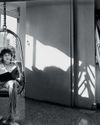
He gave the beat to the world
He would pick up the rhythms of each experience of mobility and weave them into his taals. Thus it was that he reflected joy and laughter in rhythmic cycles...such was the magic of Zakir's fingersText and photographs by Raghu Rai
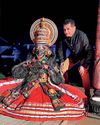
KERALA TOURISM CAMPAIGN, 1989 - TICKETS TO PARADISE
All it took was a catchy tagline-'God's Own Country'-for the world to discover Kerala's wealth of natural beauty. It remains among the best tourism ad campaigns, earning the state a place among top 10 international destinations

SPIRITUALITY - THE GURUS OF COOL
Among the cult Indian gurus, no one had a bigger hold on western minds than 'Osho' Rajneesh. He's also perhaps the role model for the enterprise-building gurus of today
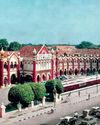
RETAIL SHOPPING - THE MALL MANIA
Shopping malls, a 1990s innovation in India, changed the way the Indian middle class shops. Their success now lies in being 'shoppertainment' destinations, offering something for everyone

CULINARY RENAISSANCE, 1978 - TANDOORI NIGHTS
ITC's Bukhara and Dum Pukht turned the world to tandoori cuisine and had an enormous impact on the F&B industry. Decades on, they are still a pit-stop for celebrities and heads of state visiting Delhi
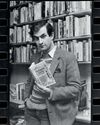
INDIAN WRITING IN ENGLISH - REVENGE OF THE NATIVE
Rushdie lit the way but Indian writing in English has taken a life of its own in the past few decades, with translated Indian fiction most recently having its moment in the sun
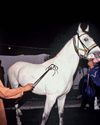
INDIAN ART - A BRUSH WITH GOLD DUST
The 1990s economic liberalisation came as oxygen, lighting up the Indian art scene. Today, artworks by established masters routinely go for astronomical amounts
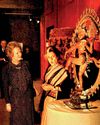
FESTIVAL OF INDIA, 1982 - CULTURE CAPITAL
The Festival of India grew into a symbol of our 'soft power', introducing our art and aesthetics to a global audience while also helping rebrand our domestic products

THE INDIPOP TREND - DISCO GOES DESI
For ages, the film song ruled. Nothing else was audible. Then came Nazia, charioteered by Biddu, and Indian ears went into a pleasant madness. Literally, Disco Deewane. A whole genre was born
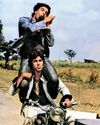
SHOLAY 1975 - THE BIRTH OF THE FANDEMIC
India had seen hits before. But Sholay seared into its collective psyche like a badland bullet. The effect was on a scale never seen before- one film creating a new mass folk culture. And a trail of monster blockbusters that still continues